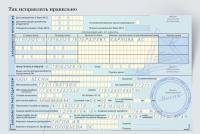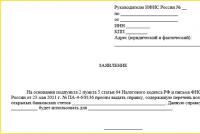The act of acceptance and transfer of work books: sample, form and procedure for filling out
The article describes in detail the procedure for compiling and the form of such a document, the circumstances that imply the need for its execution. Particular attention is paid to the work of the commission and the obligations of authorized persons of the enterprise to comply with the procedure for the acceptance and transfer of work books and their storage in the organization within the prescribed period.
One of the most important personnel documents is a work book. Since it form of strict accountability, control over its filling and preservation is extremely high. To carry out these activities, the head appoints a separate employee.
If the employee who is charged with this personnel task cannot fulfill his duties (upon dismissal or due to illness), then it becomes necessary to issue an act of acceptance and transfer of the indicated personnel documents to a new employee.
How to write a document
To empower a new employee, an act is drawn up at the enterprise. The creation of this document allows you to legally transfer cases to a new employee, additionally evaluating the quality of work of the previous personnel officer. The act is prepared by a special commission consisting of employees of the required qualifications. Composition - at least two people. For the approval of the commission, an appropriate order is issued, which is endorsed by the head personally.
The order contains the following information:
- rules for the formation of the commission, its numerical and personal composition;
- rules for collecting information, reflecting the results of the commission's work.
The commission must check the correctness of filling out work books, maintaining journals and accounting books. Only after the verification, the cases are transferred to a new employee.
Because the act of acceptance and transfer does not have a unified form, organizations have the right to develop it at their discretion. It is advisable to fix the form in your accounting policy so that if a similar situation arises, you do not create the document again.
The document is preferably issued on the letterhead of the organization.
The requirements for the content of the act are the same for organizations of all forms of ownership. Be sure to include the following information:
- details of the organization;
- date and place of creation of the act;
- FULL NAME. and positions of persons who participate in the process of acceptance and transfer;
- list of members of the commission;
- information about the test results.
If there is a lot of information, it is possible to compile several pages. All sheets are stitched with a harsh thread. On the reverse side, the fastener is stamped with the seal of the organization and the signature of an authorized person, as well as the current date and the number of sheets.
To give legal force to the document, it is important that each member of the commission leaves his signature on it. Upon completion of the work of the commission, the finished act is sent to the archive of the organization on demand.
An example of a competent drafting of an act
All information about work books, as a rule, is collected in a table.

The columns indicate:
- FULL NAME. owner.
- Series and document number.
- Inserts available.
- Notes.
The header says:
- Organization details.
- Date of creation.
- Serial number.
- Director approval visa.
The table below shows the total number of documents included in it.
If blank forms are additionally transmitted, then a second table is compiled with their list and description.
The act ends with the confirming signatures of the members of the commission. The position of the employee and the transcript of the signature are written next to it.
Duties and responsibilities of the authorized person
Since work books contain information about the length of service of the employee, control over their completion has been increased. According to the norms of the current legislation, the employer bears full responsibility for them.
For competent accounting, the employer can entrust the case to an individual employee with the necessary qualifications.
His duties are fixed in the job description. To empower this worker an order is issued.
The document is drawn up on the letterhead of the organization and contains the following information:
- purpose of creation;
- the position of the employee empowered;
- the position of the employee who will perform the duties of the responsible person in his absence.
The order imposes on the person a list of duties:
- competently maintain work books (hiring, dismissal, disciplinary sanctions, awards, correction of errors);
- to carry out accounting in the income-account book of accounting forms and in the book of accounting;
- be responsible for the safety of books.
Human resource management comes with a certain amount of responsibility. The employer has the right to appoint disciplinary action for mistakes. Such a situation is formalized by order. Depending on the degree of the mistake committed, the following penalties apply:
- verbal remark;
- reprimand with entry in a personal file;
- dismissal;
- compensation for material damage.
The employee has the right to appeal against a disciplinary sanction if he has reason to disagree with it. Disputes on appeal are resolved by the labor inspectorate or the court.
In some cases, in case of non-compliance with the job description, employee may face financial liability:
- in case of untimely provision of the book to the employee (if this served as an obstacle when applying for a new job, in connection with which the employee received financial losses);
- if the reason for dismissal was incorrectly filled out, which prevented the employee from getting a new job - in this case, the dismissed employee has the right to demand compensation for moral damage in court.
In extremely rare cases, there may be criminal liability:
- if the employer violated the rights of the employee by providing him with knowingly false information - in this case, the court will oblige the organization to pay a fine, or deprive the official of his powers for a period of two to five years;
- entering false data into documents entails liability in the form of a fine, the appointment of correctional labor or imprisonment;
- damage to documents, theft for mercenary purposes - penalties, or corrective labor.
The issues of the reliability of information in the work book and control over the maintenance of these personnel documents are discussed in the following informational video.
As you can see, in order to carry out the functions of maintaining work books, the employee is required to be extremely attentive. Therefore, continuous professional development in their field, careful briefing of the appointed person will prevent the occurrence of disputes between employees of the organization and management.






